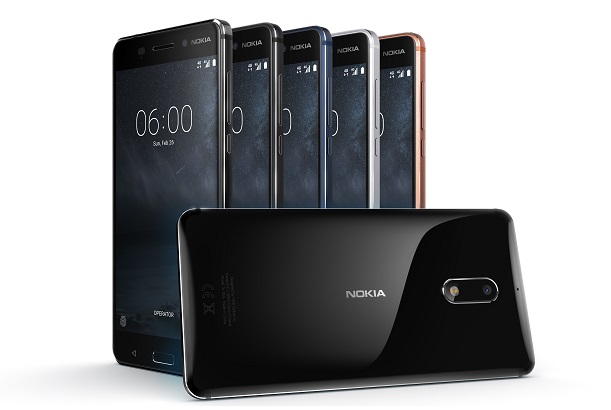Huawei, Motorola, Nokia, Samsung and ZTE vied for attention with high-profile device launches as the telecoms industry descended on Barcelona for Mobile World Congress (MWC).
The return of the Nokia brand in the form of a new premium Android smartphone was possibly the main event. Alongside HMD, the company that is building the new phones, Nokia announced two new devices, the Nokia 5 and the Nokia 3.
The Nokia 6, currently sold only in China, will also be made available globally.
The Nokia 6 is priced at €229, the Nokia 5 at €189 and the Nokia 3 at €139. All devices will ship with Android Nougat and Google Assistant and will be available in Q2 2017.
Nokia also relaunched the Nokia 3310 as a cheap (€49) alternative, with a month-long standby battery and 22-hour talk time.
In addition, Nokia announced that the Withings portfolio of connected health products would launch under the Nokia brand in summer 2017. Nokia also announced it was redesigning the Health Mate app to improve user experience as well as launching the Patient Care platform, which can be used by healthcare professionals to monitor patients using smart devices.
Ian Fogg, Head of Mobile Analysis at IHS Markit, commented: “The launch of the new re-imagined Nokia 3310 featurephone threatens to overshadow HMD’s modern smartphones. HMD must avoid the Nokia brand being seen as purely a nostalgia brand.”
He added: “Once HMD has had time to develop high end products, IHS Markit expects HMD to launch more premium models, leveraging the extensive Nokia intellectual property portfolio which old Nokia retained when selling its former device business to Microsoft.”
Nokia was not the only name from the early days of mobile phone industry that announced new devices: erstwhile rival Motorola also launched a new generation of its Moto G handsets, the Moto G5.
The company emphasised the battery life and fast-charging capabilities of the devices, as well as the 1.4GHz octa-core processor.
Meanwhile, Samsung refreshed its tablet portfolio with the Galaxy Tab S3 and Galaxy Book. The Tab S3 is designed for use in video, gaming and productivity, while the Galaxy Book is targeted at professionals.
Samsung also made the first major VR announcement of the conference, with the launch of the Samsung Gear VR with Controller, which is its first headset with a controller.
Huawei also launched new devices, including two smartphones, the P10 and P10 Plus, and two smartwatches, the Huawei Watch 2 and Porsche Design Huawei Smartwatch.
As well as enhanced cameras, the devices feature a Kirin 960 processor, Huawei Ultra Memory and new EMUI 5.1 with 4×4 LTE MIMO antenna system and 2×2 Wi-Fi MIMO antenna system.
The P10 will cost €649, the 64GB version of the P10 Plus will cost €699 and the 128GB version of the P10 Plus will cost €799. The Huawei Watch 2 will start at €329.
The products will be available from March in selected regions.
Additionally, ZTE unveiled the Gigabit Phone, the world’s first smartphone with download speeds reaching up to 1Gbps.
ZTE will be exhibiting the device at MWC, although as it is currently in the prototype stage it will not be available for tests.



